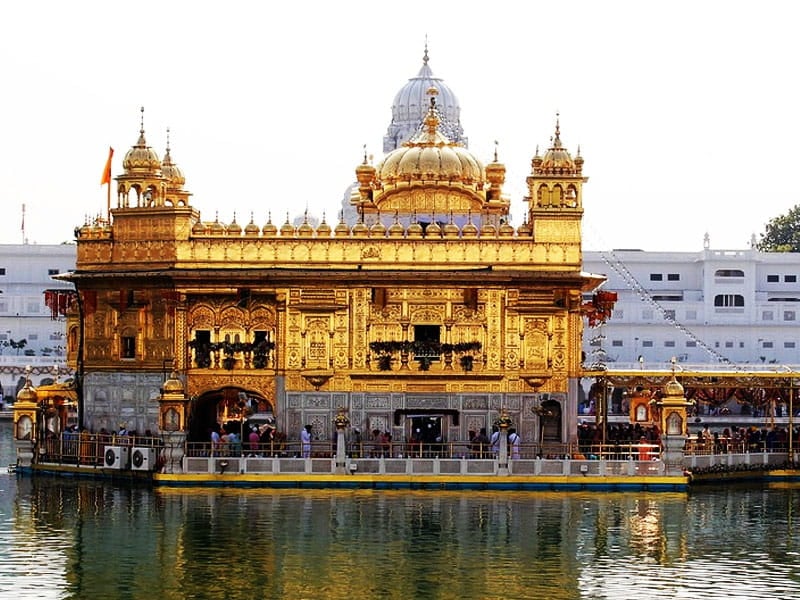Before I caught sight of him standing on the top step of an elegant brownstone in Boston's Beacon Hill neighborhood, I had smelled the incense, slithering in a slow coiling stream of smoke out of his street-level window on Commonwealth Avenue. He was young and slight, with five o'clock shadow for hair and a vertical line of yellow dye streaked across his forehead. His robe, translucent as tissue paper, was light orange, the color of white socks after they'd been washed with a red shirt. "Hello," he said demurely.
"How're you doing?" I asked. I wondered aloud if there was somebody available to talk, because I wanted to learn a bit about the Hare Krishna community. "I think there is," he said, a noncommittal affirmation.
He motioned me up the steps and into a hardwood hallway. I asked whether I should remove my flip-flops. "Up to you," he said in a voice soft and thin, the hesitant tone of someone in a library. At midday, the house was dim; it felt more like early evening. Painted portraits of mustachioed teachers and garish, gray-skinned deities adorned the walls.
"I'm Tom," I said, holding out my hand.
In the instant after our introduction, I uttered a silent prayer: May I never have to call roll for a gathering of Hare Krishnas. His name was Kisna Duaipayana Das. It hearkened back to an author of the Vedas--the encyclopedic oral and written body of sacred Hindu revelation--who chose to live as a hermit five millennia ago. Kisna had led me to sit on a floor pillow in the main room of the building. Part of me wanted to prove my yogi-like discipline by staying in one cross-legged position. I hoped he might remember me with admiration as the guy who sat without shifting.
I wondered about his interactions with his neighbors. Did they avoid the Krishnas? Like them? Visit them? "Do you," I posed carefully, "ever hit the 7-11 on the corner in your wardrobe?" Kisna smiled. "I go to the store to get things sometimes. If you go to India, nobody would think anything of wearing dhoti, this clothing. So for a devotee, it's kind of about just being who you are. Sometimes, you're walking and you hear 'Hare Krishna.' Some people actually sing and dance. 'Hare Krishna, hare Krishna...' Very few will give a real negative reaction."
I thought to myself that the neighbors' chanting stunk of parody. To Kisna, however, a satirical serenade wasn't a stereotype; it was a spiritual practice. Every time someone uttered the words "Hare" and "Krishna" and "ram," regardless of intent (although, as he had pointed out, a sincere intention obviously helps), every time a neighbor clanged imaginary hand cymbals, impromptu sermons were preached. He was saying that we're praying, even when we're teasing.
When apparent mockery can be a sermon and the 7-11 is an ad hoc classroom on religious pluralism, pizza can be a kind of edible totem. When Kisna's mom and dad last visited, the devotees on kitchen duty prepared, alongside the usual rice and daal, homemade pizza. Kisna's parents are still Catholic, and their stays are typically brief, their entries into the world of Krishna consciousness cursory. But having pizza on their plates, Kisna said, made them feel more at home.
I requested a sample of the mantra. "'Hare Krishna, Hare Krishna, Krishna Krishna, Hare Hare. Hare ram, hare ram, ram ram, hare hare.' Hare signifies God's energies; Krishna signifies the all-attractive person; ram means one who takes away all inauspicious things. So by chanting hare and Krishna and ram, we associate with God through his name." The American Hare Krishna movement began in the mid-1960s, but the seed was sown two generations earlier, when an Indian guru foresaw that a prophet would spread Krishna worship throughout the world. That prophet turned out to be a charismatic ascetic named Srila Prabhupada. Prabhupada arrived in New York on a steamer from India in 1965 with only a drum. He made his way to Central Park, where he began to play and chant the mantra. Within a couple of weeks, he had found a room where he prepared free meals for the spiritually curious, who in turn brought friends.
Prabhupada's appeal as a teacher and the simplicity of his lifestyle served as a powerful fund-raising device. Within a few years, brownstones like the one in Boston, as well as a London mansion owned by devotee George Harrison, were donated to the movement.
The movement is full of contradictions. Though many attracted to the tradition were more interested in alternative lifestyles--including hippies intent on exploring drugs and free love--Hare Krishna demanded a strict moral code and a renunciant lifestyle. And despite the ascetic requirements, its members often lived in tony settings like Beacon Hill. And though it seemed a radical expression of the youth counterculture, the Hare Krishna movement was in fact an extension of a long line of Hindu Krishna worship.
"So are you more of a Christian now that you're a devotee of Krishna than when you were a Catholic?"
"It's kind of a far-out thing," Kisna admitted. "I don't see this as opposed, even if a Catholic may. This isn't a sectarian movement. We may look a certain way, and chant 'Hare Krishna,' but we believe everyone is worshipping the same God.
"Some people think that when you leave one practice and take up another," Kisna pointed out, "that you're totally rejecting the other practice. Some people wonder, why do Catholic priests live like that? Now I see. They're trying to focus on spiritual life. After being exposed to Krishna consciousness, then everything kind of fell into place."

